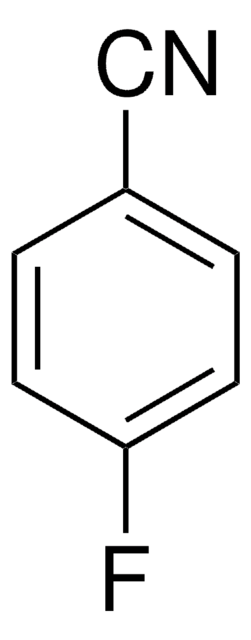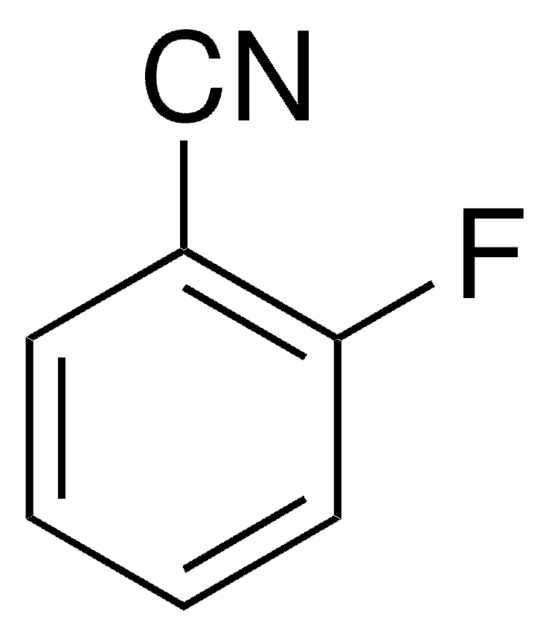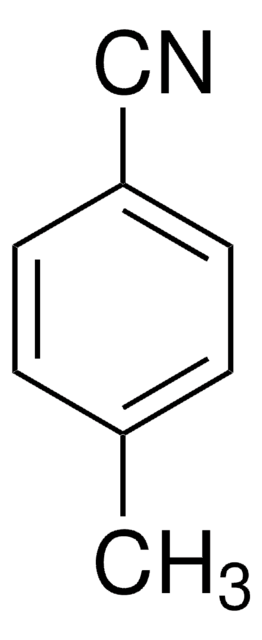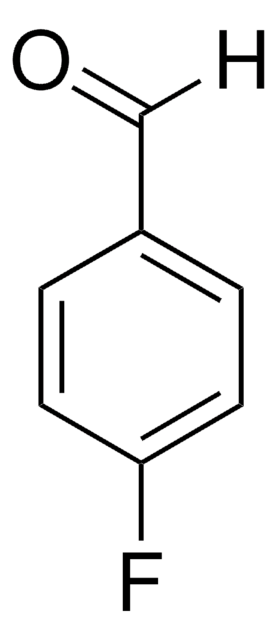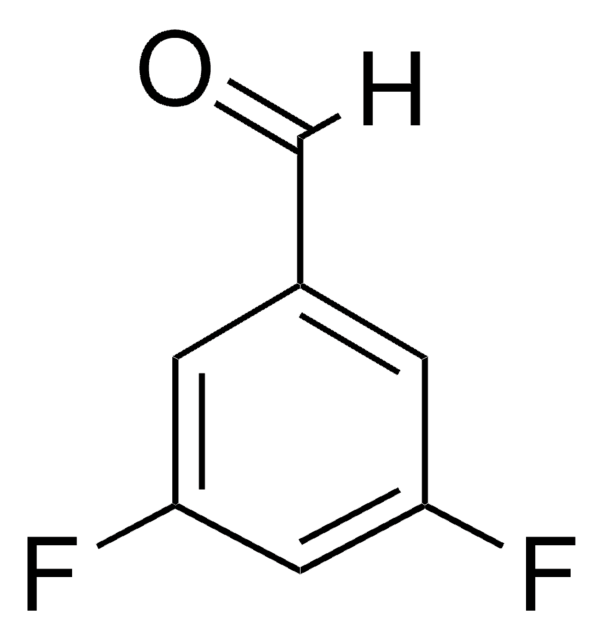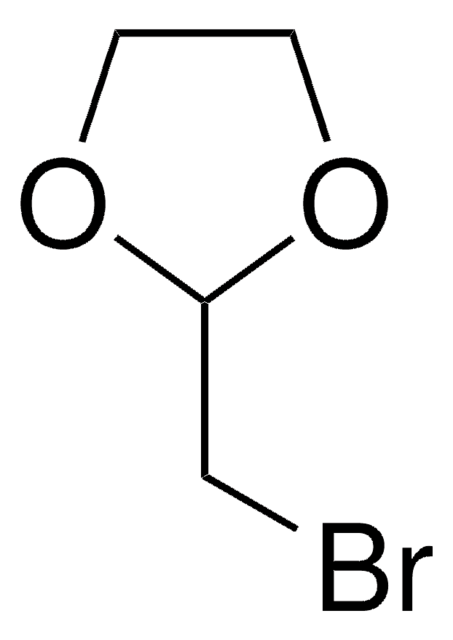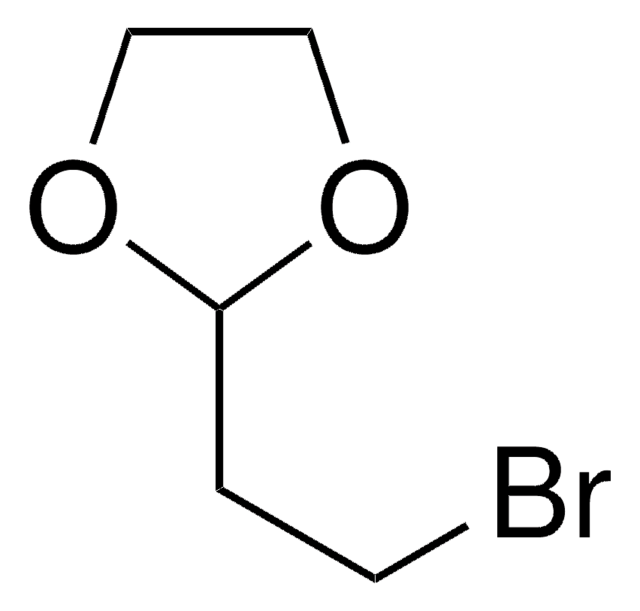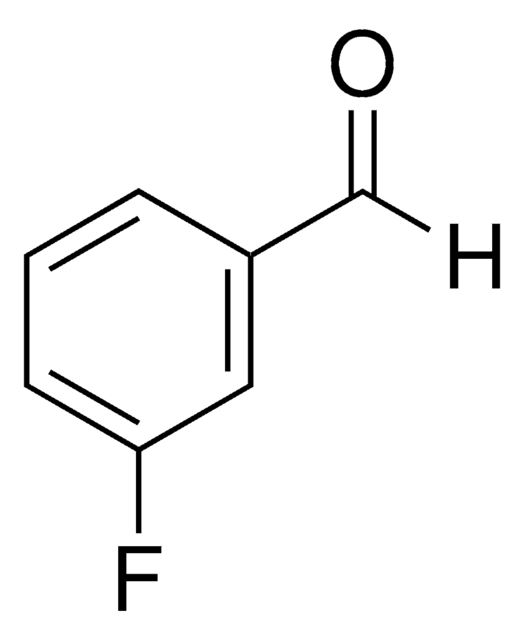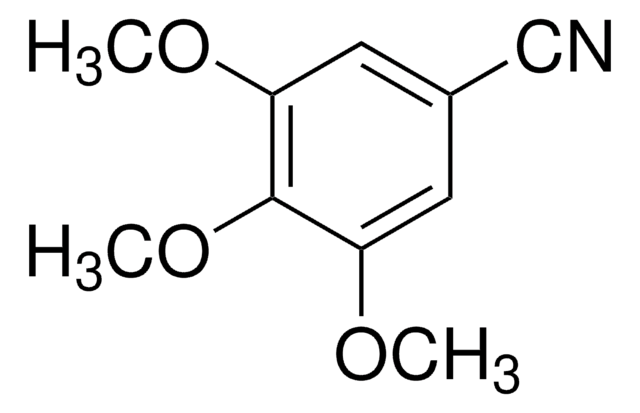All Photos(1)
About This Item
Linear Formula:
FC6H4CN
CAS Number:
Molecular Weight:
121.11
EC Number:
MDL number:
UNSPSC Code:
12352100
PubChem Substance ID:
NACRES:
NA.22
Recommended Products
Assay
98%
form
liquid
refractive index
n20/D 1.5043 (lit.)
bp
182-183 °C/753 mmHg (lit.)
mp
−16 °C (lit.)
density
1.133 g/mL at 25 °C (lit.)
functional group
fluoro
nitrile
SMILES string
Fc1cccc(c1)C#N
InChI
1S/C7H4FN/c8-7-3-1-2-6(4-7)5-9/h1-4H
InChI key
JZTPKAROPNTQQV-UHFFFAOYSA-N
General description
Microwave spectrum of 3-fluorobenzonitrile has been studied. Amination of 3-fluorobenzonitrile with morpholine in DMSO at 100°C has been investigated.
Application
3-Fluorobenzonitrile has been used in the preparation of bis(3-cyanophenoxy)phenylenes.
Signal Word
Danger
Hazard Statements
Precautionary Statements
Hazard Classifications
Acute Tox. 4 Oral - Eye Dam. 1 - Skin Irrit. 2 - STOT SE 3
Target Organs
Respiratory system
Storage Class Code
6.1C - Combustible acute toxic Cat.3 / toxic compounds or compounds which causing chronic effects
WGK
WGK 3
Flash Point(F)
154.4 °F - closed cup
Flash Point(C)
68 °C - closed cup
Personal Protective Equipment
dust mask type N95 (US), Eyeshields, Gloves
Regulatory Information
新产品
Choose from one of the most recent versions:
Already Own This Product?
Find documentation for the products that you have recently purchased in the Document Library.
Improved yields of meta-amination and symmetrical and unsymmetrical diamination of benzenes.
Brown GR, et al.
Tetrahedron Letters, 42(23), 3917-3919 (2001)
Microwave spectral study of 3-fluorobenzonitrile.
Dutta A, et al.
Journal of Molecular Spectroscopy, 118(1), 232-236 (1986)
Xiaotong Cheng et al.
The Journal of clinical investigation, 130(5), 2237-2251 (2020-01-31)
Hypoxia-inducible factor (HIF) is strikingly upregulated in many types of cancer, and there is great interest in applying inhibitors of HIF as anticancer therapeutics. The most advanced of these are small molecules that target the HIF-2 isoform through binding the
Synthesis of bis (ether nitrile) s and bis (ether acid) s from simplearomatic diols bymeta-fluoro displacement from3-fluorobenzonitrile.
Eastmond GC and Paprotny J.
Journal of Materials Chemistry, 7(8), 1321-1326 (1997)
Oriol Planas et al.
Science (New York, N.Y.), 367(6475), 313-317 (2020-01-18)
Bismuth catalysis has traditionally relied on the Lewis acidic properties of the element in a fixed oxidation state. In this paper, we report a series of bismuth complexes that can undergo oxidative addition, reductive elimination, and transmetallation in a manner
Our team of scientists has experience in all areas of research including Life Science, Material Science, Chemical Synthesis, Chromatography, Analytical and many others.
Contact Technical Service